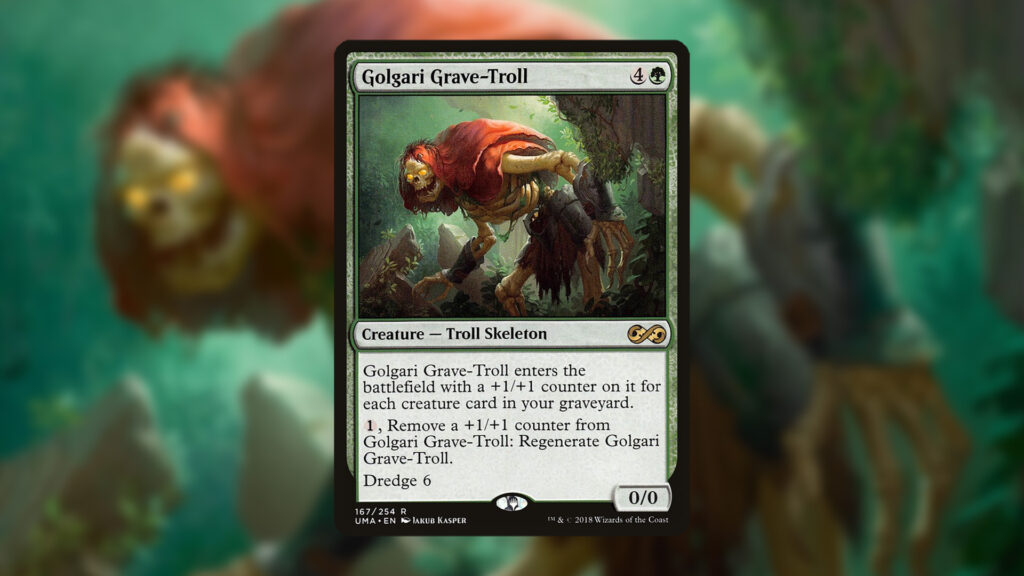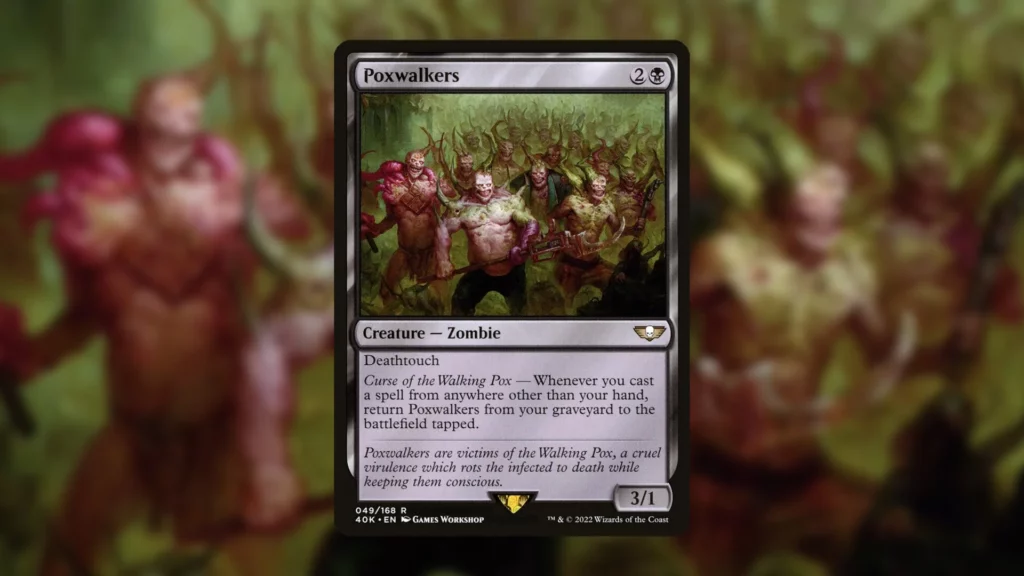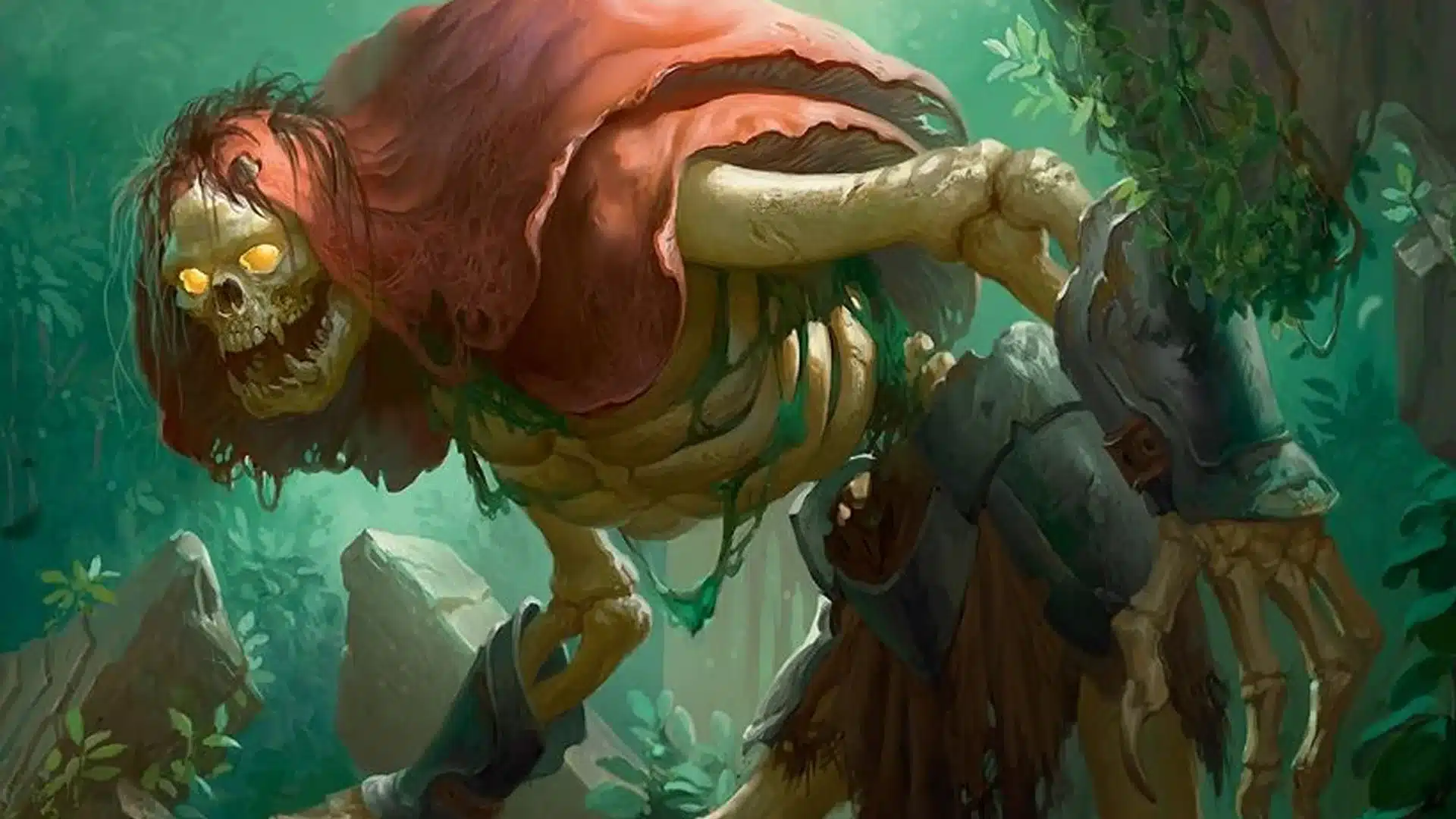Dredge is one of the most broken mechanics in MTG history. Nothing can fill the graveyard with quite as much speed as replacing your draws by milling five or six cards. The mechanic was so broken that the best Dredge enabler of them all, Golgari Grave-Troll, was banned in Modern and restricted in Vintage. Despite the return of Faithless Looting in the Modern format, Dredge has not been powerful enough to make a dent in that format. This seemed like the end for Dredge outside of Vintage, but the strategy has unexpectedly reappeared in Legacy.
After coming second in a 238-player event, it’s safe to say that Dredge still has a place in the Legacy format. What’s more surprising is that this list doesn’t contain Hogaak, Arisen Necropolis, known as one of the most broken graveyard cards in MTG history. Instead, the deck utilizes the effects of cards like Lion’s Eye Diamond and Breakthrough to dump the hand and immediately start Dredging deep into the deck.
A Combo Twist
Like most Dredge decks, Legacy Dredge primarily wins the game by utilizing the Dredge effects of cards like Stinkweed Imp and Golgari Grave-Troll to mill a ton of graveyard shenanigans into your bin. Use Bridge From Below in combination with Cabal Therapy, Poxwalkers, and Narcomoeba to create a massive board of creatures. Lastly, just grant them Haste with Anger and win the game.
Because Legacy Dredge can mill out incredibly quickly, there is an additional win condition attached to having an empty library. Dread Return and Thassa’s Oracle isn’t a new combo to the format, but it generally pops up exclusively in more focused combo strategies like Oops! All Spells and Cephalid Breakfast. While Dredge doesn’t wield a combo that can empty its library in one shot, it can empty its library significantly quickly. With all the recurring creatures in the form of Narcomoeba, Poxwalkers, and the tokens from Bridge From Below, satisfying Dread Return’s Flashback effect is easy.
The particular build of LED Dredge that came second in the Legacy Showcase Challenge utilizes a copy of Satoru, the Infiltrator. This may seem out of place, but it enables you to Dredge deep into your deck ahead of schedule to enable Thassa’s Oracle. Since you have two Dread Return in your deck, you can use the first to resurrect Satoru.
Satoru draws a card every time a creature enters play without spending mana on it. Drawing cards can be replaced by Dredging, which allows Satoru’s draws to cause more creatures, namely Narcomoeba, to enter play. This creates a massive chain reaction that can mill your library. Just be careful, as Satoru will occasionally draw a card from an empty library if you order your triggers poorly.
A Banned Card Unrestricted

The biggest tool that Legacy Dredge players can utilize that Vintage and Modern don’t have access to is a full playset of Golgari Grave-Troll. This is the only card in all of Magic that can Dredge 6, meaning that you can replace one of your draws by milling six cards and returning the Grave-Troll to your hand. Dredging 6 cards vs Dredging 5 cards with Stinkweed Imp or Golgari Thug may not seem like a huge difference, but the card is banned in Modern and Restricted in Vintage for a reason.
This allows Legacy Dredge to fill its graveyard at unprecedented speeds, changing the winning strategies that the deck utilizes somewhat. An unusual secondary mode that sometimes comes up in this deck is using Dead Return to resurrect a Golgari Grave-Troll. If you’ve dumped most of your deck in the bin, it’s easy for this card to become a 10/10 with massive Regenerative abilities. This is usually enough to end most fair games of Legacy.
Recurring Warhammer Nightmares

Like normal Dredge, this deck can win the game by flooding the board with recurring creatures from the grave. Poxwalkers is the main threat that keeps coming back – another card that is unique to the Legacy build of this deck. Hailing from the Warhammer 40K set, Poxwalkers can return from the grave as long as you cast a spell from outside of your hand. Escaping Ox of Agonas can get the job done, but the best cards to cast in order to achieve this are Otherworldly Gaze and Cabal Therapy.
Surveilling 3 may not seem like much in a format as fast as Legacy, but being able to cast Otherworldly Gaze from the grave is one of the most effective ways to get your Poxwalkers back. The card plays triple duty, filling your graveyard with Dredge enablers, fixing your draw if needed, and recurring your creatures. The card is particularly good against counterspell decks that need to offer two answers for Otherworldly Gaze, as they cannot compete with your Dredge plan.
The best card to recur Poxwalkers with is Cabal Therapy. Not only can this strip cards out of your opponent’s hands, but this is a free way to trigger Bridge From Below to start building a board full of creatures. For reference, Poxwalkers immediately returns to play even if sacrificed to cast Cabal Therapy.
Once your bodies hit the battlefield, Bridge From Below will make sure that they stick around. As long as the infamous enchantment is in your graveyard, Bridge From Below will replace your fallen comrades with 2/2 Zombie tokens. Once you have a few Bridge in the bin, Cabal Therapy becomes a way to create multiple bodies for free.
The Enablers
How does this deck start Dredging at insane speeds? First, you need to get your Dredge cards into the grave. Next, you need to start drawing cards. Multiple different cards in the deck can achieve this. Breakthrough, Faithless Looting, and Careful Study are the easiest ways to do this. Drawing can Dredge cards, and discarding is the best way to get your Dredge cards in the bin at the beginning of the game.
Lion’s Eye Diamond plays a bizarre role here. You can use the card to dump Dredge cards in your bin, but it can also re-cast more expensive Flashback cards like Faithless Looting. Your fastest hands that threaten game-winning boards with Hasty Zombie Tokens thanks to Anger and Bridge From Below, or cast Thassa’s Oracle as early as turn two (turn one is technically possible, but I have never seen it) usually involves a Lion’s Eye Diamond.
A Rogue Deck Putting Up Strong Results
LED Dredge is not a deck that many Legacy players are prepared for, and that is the circumstance where strategies like Dredge shine. If the deck becomes an accepted metagame presence, it will likely perform much worse. For now, the deck seems to have a strong matchup against everything that isn’t trying to win in a more aggressive, but fragile way. Cephalid Breakfast, Storm variants, and Oops! All Spells feel like uphill battles. In the Legacy Showcase Challenge, where this nostalgic strategy reappeared, the deck ultimately lost to Cephalid Breakfast.
While Dredge offers a slower combo, the deck is far more resilient to common interaction in the Legacy format, allowing the deck to have a superior matchup against the rest of the field when compared to other combo decks. I tend to gravitate towards wacky decks that are a bit off-meta. If you’re a similar player, try Legacy LED Dredge.

